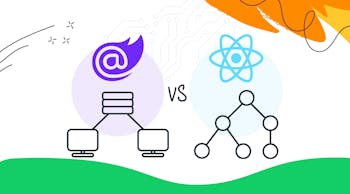A new decade is the perfect time to analyze the efficiency of your business to determine what is, and isn’t working. With so many moving parts – employees, software, meetings, and customers – your business can quickly become too tied-up in the details, and not focused enough on what really matters – growth. If you’re looking to improve your business efficiency in 2020, follow our checklist below to reduce the noise and focus on your business goals.
1. AUTOMATE WHAT YOU CAN
Quickly reflect on your average business day. How much of your time is spent performing tasks that could be automated? Easy tasks to automate include:
- Reporting of business metrics
- Sending receipts to customers
- Regular sharing of status reports
- Sending pay stubs to employees
- Entering and analyzing field data
Automation frees up time for you and your employees to focus on work that requires deeper thinking or a focus on your business strategy. While it can be daunting to implement any sort of automation, the benefits you’ll receive in the long run outweigh the initial discomfort.
If you’re concerned about the price of automation software, there’s no need to worry just yet.
Most software has free trials or free versions with limitations that will give you a taste of automation without having to make an upfront commitment.
If off-the-shelf software doesn’t quite fit your business needs, consider building a system customized to your unique tasks and processes. If your company lives in spreadsheets, you are almost certainly making frequent errors and duplicating work. Inventive can help you identify ways to maximize efficiency by developing a system that automates your daily tasks and information sharing.
2. TRACK YOUR TASKS
On the topic of software, there is one other type we want to mention: task tracking software. Browser-based project tracking software, like Asana or Trello, can quickly streamline your business for efficiency by keeping the entire team on track. Not only does project tracking software keep everyone accountable for their own work, but it cuts down on communication between team members. For example, if you and a colleague are working on an investor presentation together you can create a task folder for the project within the software. This task folder will share details like the project due date along with the due dates of smaller deliverables to ensure the project is on track. Without task tracking software, you would have to send emails back and forth or have a weekly standup – both would distract you from your actual work.
Most project tracking software is very affordable and can be billed on a monthly or yearly basis with plan prices dependent on the amount of users.
3.CUT BACK ON EMAILS
Communication is an essential part of any smooth-running business, however, there is a right place and time to do it. Surely you can think back on a time when you were working on a project, only to be interrupted or distracted by a seemingly urgent email or chat. These sort of disruptive messages can quickly deter any progress you were making and slow your completion timeline down drastically. The best way to prevent these types of emails and chats is to encourage more regular face-to-face communication.
Consider implementing a daily standup to go over business objectives and goals, and more intimate meetings for smaller projects. Of course, you don’t want to completely discourage emails or chats as they can be useful when warranted, but instead provide different avenues for your employees to collaborate. If you and your employees are still finding themselves distracted by incoming messages, you can easily turn on your ‘Do Not Disturb’ for a quick fix.
4. DISCOURAGE MULTI-TASKING
Multitasking is an easy habit to fall into, but it’s one that needs to be broken; multitasking doesn’t improve business efficiency, in fact, it prevents it and should be avoided. To promote focusing on a single task or project instead of hopping in between several, become a master of your calendar.
Set aside blocks of time for every project on your plate based on their level of priority or the amount of time it will take to complete them. As you check them off your list, you can use the remaining time in your day to tie up other lose ends instead of trying to do them at the same time as your other projects. The bonus to following this type of system is that it will help you clearly understand which projects are time sucks and could be automated!
Encourage employees to follow a similar routine and watch as projects get completed more quickly and thoroughly.
5. ESTABLISH ROUTINES AND PROCESSES
While you may enjoy spontaneity in your personal life it’s something that should be avoided in your business; last minute meetings, calls, and even lunches can all disrupt your established workflow and lead to business inefficiencies. To combat the incoming stream of disruptions follow these guidelines:
- Maintain a strict calendar that blocks off times for meetings, breaks, and working time.
- Discourage last-minute meetings and replace them with regular stand ups that can be cancelled if unneeded.
- Encourage face-to-face chatting to minimize back-and-forth emails and chats.
These minor adjustments will ensure you’re spending your workday actually growing your business.
Making small steps towards a more efficient business will boost its growth and your goals. For optimal business growth, contact our experts at Inventive for custom software solutions and consulting to take your business to the next level.









